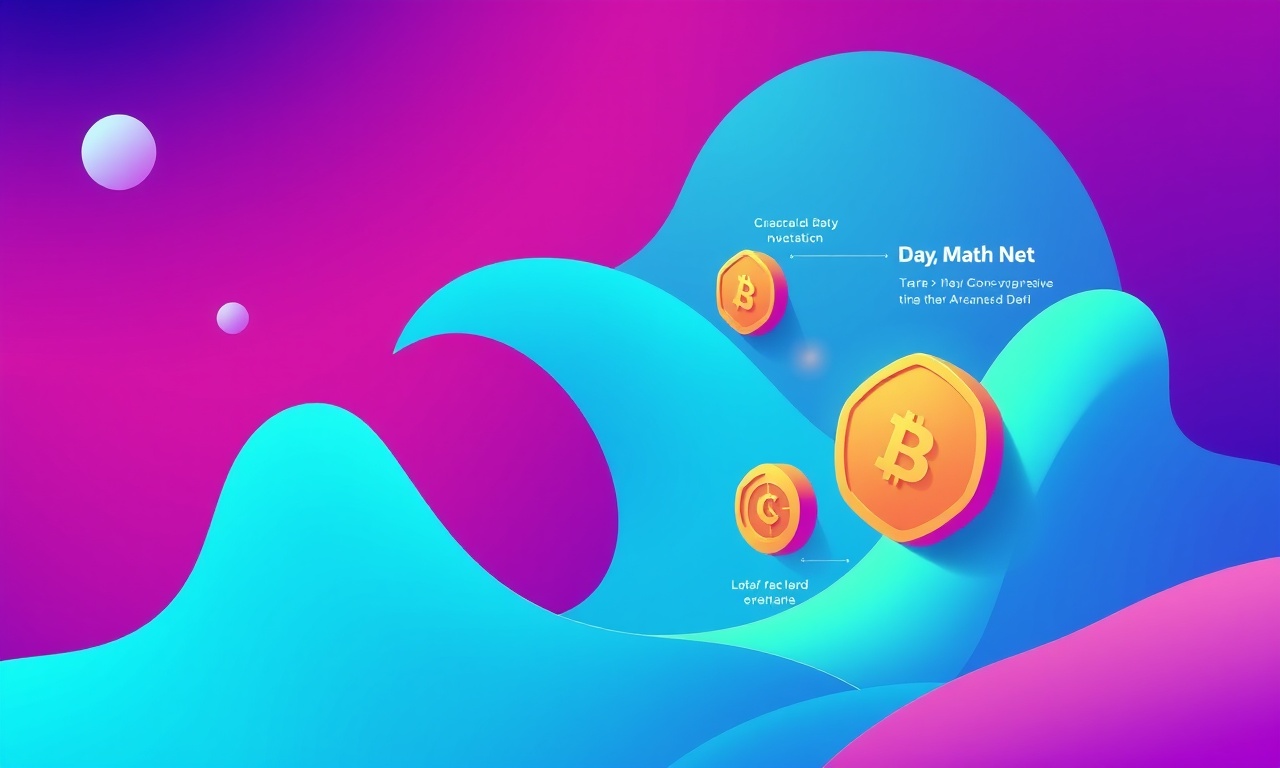Crafting Seamless DApp Interoperability for Advanced DeFi

The Imperative of Seamless DApp Interoperability in Advanced DeFi
Decentralized finance is no longer a collection of isolated protocols. It is an ecosystem of protocols that must exchange value, data, and intent in real time. When developers design new applications, they must consider how those applications will talk to every other player on the network—whether it is a liquidity pool on Ethereum, a lending platform on Solana, or a stable‑coin bridge on Polygon. This article dives into the architectural principles, tooling, and emerging standards that allow DApps to communicate flawlessly across chains, all while guarding against the unique threats posed by Miner or Maximal Extractable Value.
Why Interoperability Matters
The growth of DeFi has spawned a proliferation of protocols that offer the same core functions—lending, borrowing, trading, or staking—each on a different blockchain. A user now has to juggle multiple wallets, manage cross‑chain gas costs, and trust a series of custodial bridges. From a developer perspective, the lack of interoperability translates to duplicated code, higher security risk, and a fragmented user experience. Seamless DApp‑to‑DApp communication reduces friction, unlocks new use cases, and improves market efficiency.
The value of interoperability is especially pronounced for advanced use cases such as algorithmic stablecoins that need price feeds from multiple chains, liquidity aggregation across DEXs, or flash loan arbitrage that spans several blockchains. Each of these scenarios demands fast, reliable, and secure cross‑chain messaging.
Core Building Blocks of Inter‑Chain Communication
Below is a list of the fundamental components that make up a robust interoperability framework. Each component has a well‑defined role, and their composition determines the overall system performance.
Chain Identification and Namespace
Every blockchain has a unique identifier. Protocols rely on these IDs to route messages correctly. A clear namespace prevents accidental collisions and ensures that assets retain their identity across chains.
Token Representation
Token bridges use a two‑step approach: locking the original token on its home chain and minting a representation on the destination chain. Common models include:
- Wrapped Tokens – The destination token is a mint‑burn pair tied to the lock on the source chain.
- Non‑Fungible Representations – For unique assets (e.g., NFTs), the bridge records ownership on a shared ledger.
- Pegged Tokens – These maintain a 1:1 relationship with the source asset through an oracle.
Cross‑Chain Messaging Protocols
These protocols transport payloads—transaction requests, state updates, or data queries—between chains.
- IBC (Inter‑Blockchain Communication) – A standard in Cosmos that enables secure, ordered message delivery.
- XCM (Cross‑Chain Message) – Polkadot’s framework for inter‑parachain communication.
- CCIP (Chainlink Cross‑Chain Interoperability Protocol) – A unified API that abstracts bridge details for developers.
- Wormhole – Solana‑centric bridge that also connects to Ethereum and others.
Relayers and Validators
Relayers are nodes that observe events on one chain and forward them to another. Validators sign and commit these messages. A trust‑less architecture ensures that no single entity can arbitrarily modify cross‑chain data.
Data Availability and Finality
When messages are forwarded, the destination chain must be able to validate the source event. This often involves retrieving proofs (Merkle roots, signed headers, or notarized receipts). Finality guarantees that the state has been confirmed by a consensus mechanism before an action is taken.
MEV: The Unique Threat to Interoperability
Miner or Maximal Extractable Value is a form of transaction ordering fraud that can severely impact cross‑chain protocols. In a simple example, a miner on Ethereum might reorder a flash loan that involves a token bridge, causing a price shift on the destination chain that the miner captures for profit.
How MEV Persists in Cross‑Chain Operations
- Front‑Running the Bridge – A miner sees a cross‑chain withdrawal request and inserts a transaction that front‑runs the bridge lock, manipulating the on‑chain price before the withdrawal is processed.
- Time‑Displaced Settlement – Cross‑chain transfers often have a delay. During this window, an attacker can exploit price discrepancies across chains.
- Transaction Bundle Attacks – Bundled transactions that span multiple chains can be reordered to maximize profit, often without detection.
Mitigation Techniques
- Time‑Weighted Average Prices (TWAP) – Use long‑term price windows that are difficult to manipulate within a single block.
- Private Transaction Pools – Services such as Flashbots provide a way for users to submit bundles that are only visible to miners that agree to honor them.
- Protocol‑Level Randomness – Introducing verifiable randomness in transaction ordering reduces the predictability miners exploit.
- Atomic Cross‑Chain Swaps – Designing transfers that are either fully executed or fully reverted reduces the window for front‑running.
Protocol Integration: From Token Bridge to Full DApp Interaction
The goal of protocol integration is to allow a DApp to treat assets from any chain as if they were native. Here’s a pragmatic approach to achieving this integration.
1. Define the Asset Space
List all tokens or assets your DApp will interact with. For each, decide:
- Whether it will be native to the chain or bridged.
- The representation format (ERC‑20, ERC‑721, ERC‑1155).
- The token’s stability (stablecoin vs. volatile asset).
2. Choose a Cross‑Chain Messaging Layer
Select a messaging protocol that aligns with your target chains. For example:
- Ethereum & Polygon – CCIP or LayerZero.
- Ethereum & Solana – Wormhole or Cross‑Chain Wormhole.
- Ethereum & Cosmos – IBC via a custom gateway.
3. Implement Relayer Trust Models
Decide if you will rely on a public relayer network or run your own. Public networks such as the CCIP relayer provide a lower barrier to entry, but running a private validator cluster can reduce latency and improve security.
4. Build a Unified SDK
Create or adopt a software development kit that abstracts the underlying messaging details. This SDK should:
- Convert between native and bridged token formats.
- Provide a consistent transaction API across chains.
- Handle signature verification and gas estimation.
5. Conduct Security Audits Across Chains
Because cross‑chain logic can introduce subtle bugs, perform audits that cover:
- Message encoding/decoding.
- Proof verification.
- Reentrancy in multi‑chain callbacks.
Designing for Low‑Latency and High‑Throughput
When building advanced DeFi DApps, performance is as critical as security. Low latency is essential for arbitrage, liquidity provision, and flash loans. High throughput ensures that users do not experience congestion when initiating cross‑chain transfers.
Strategies to Reduce Latency
- Batch Relaying – Aggregate multiple messages into a single transaction on the destination chain.
- Edge Relayers – Deploy relayers closer to users geographically to reduce propagation delay.
- Optimistic Finality – Accept provisional state updates and later reconcile proofs to avoid waiting for finality.
Strategies to Increase Throughput
- Layer‑2 Rollups – Use zk‑Rollups or Optimistic Rollups to move heavy compute off the main chain.
- Parallel Message Channels – Design multiple independent channels for different asset classes.
- Dynamic Gas Scaling – Adjust gas prices in real time to maintain optimal throughput without overpaying.
Real‑World Example: Cross‑Chain Yield Farming
Consider a DApp that allows users to stake USDC on Ethereum and earn yield on Solana. The flow would be:
- User deposits USDC on Ethereum into a smart contract that locks the tokens.
- Relayer observes the lock event and submits a message via the chosen protocol (e.g., CCIP) to Solana.
- Solana contract mints an equivalent amount of a wrapped USDC token.
- User receives a yield token representing their stake on Solana.
- At maturity, the user can burn the yield token to retrieve the wrapped USDC.
- Relayer forwards a burn event to Ethereum, where the original USDC is unlocked and returned to the user.
This workflow demonstrates how a single application can orchestrate operations across chains without the user manually handling bridges.
The Role of Standards in Interoperability
Standards play a pivotal role in ensuring that DApps can seamlessly interoperate. Below are the most impactful standards in the ecosystem.
ERC‑20, ERC‑721, ERC‑1155
These token standards remain the foundation. Inter‑chain bridges must be fully compatible with these interfaces to guarantee smooth token transfers.
EIP‑712 (Typed Data Signing)
EIP‑712 enables secure off‑chain data signing that can be verified on chain. It is essential for cross‑chain approvals and permit patterns that reduce gas costs.
EIP‑2612 (Permit)
EIP‑2612 extends ERC‑20 to allow approvals via signatures, eliminating the need for on‑chain approval transactions—a boon for cross‑chain DApps that require multiple approvals.
EIP‑1153 (Event Indexing)
EIP‑1153 introduces a standardized way to emit indexed events. Relayers can listen to these events more efficiently, improving message detection latency.
CCIP (Chainlink Cross‑Chain Interoperability Protocol)
CCIP offers a unified API for sending messages across chains, abstracting the underlying bridge mechanics. It also supports a rich data payload, allowing developers to embed complex operations in a single message.
Governance and Risk Management
Interoperability is not just technical; it is a governance problem. Determining who can submit messages, who can validate them, and how disputes are resolved is vital.
- Decentralized Relayer Governance – Use a DAO to oversee relayer operations, ensuring that no single entity can control message routing.
- Penalty Mechanisms – Introduce slashing conditions for relayers that fail to deliver or provide invalid proofs.
- Multi‑Signature Approvals – Require cross‑chain actions to be signed by multiple independent parties.
Future Directions: Toward a Unified DeFi Fabric
The vision of a truly interoperable DeFi fabric involves:
- Universal Liquidity Pools – Liquidity that can be tapped from any chain without the need for separate pools.
- Cross‑Chain Automated Market Makers – AMMs that can automatically route orders across chains.
- Composable Protocol Suites – A set of composable primitives that can be mixed and matched to create new financial products.
- Standardized Governance Protocols – Cross‑chain governance that allows a single decision to affect multiple chains simultaneously.
The journey toward this future will rely on collaboration between protocol developers, bridge operators, and the broader community.
Checklist for Building Seamless Interoperability
- [ ] Map all assets and determine token representation.
- [ ] Choose a cross‑chain messaging protocol that covers all target chains.
- [ ] Implement or adopt a unified SDK that abstracts chain differences.
- [ ] Set up a relayer network with robust proof verification.
- [ ] Integrate MEV mitigation techniques throughout the design.
- [ ] Perform multi‑chain security audits.
- [ ] Adopt relevant token and data standards.
- [ ] Establish decentralized governance for relayers and protocol upgrades.
- [ ] Test end‑to‑end scenarios with real user flows.
Concluding Thoughts
Crafting seamless DApp interoperability is no longer an optional enhancement; it is a prerequisite for advanced DeFi ecosystems. By building on well‑established standards, adopting rigorous security practices, and integrating MEV protection, developers can create applications that operate fluidly across chains. The result is a richer, more efficient DeFi landscape where users enjoy frictionless experiences and protocols benefit from amplified liquidity and innovation.


.png)
Emma Varela
Emma is a financial engineer and blockchain researcher specializing in decentralized market models. With years of experience in DeFi protocol design, she writes about token economics, governance systems, and the evolving dynamics of on-chain liquidity.
Discussion (6)
Join the Discussion
Your comment has been submitted for moderation.
Random Posts

Unlocking DeFi Fundamentals Automated Market Makers and Loss Prevention Techniques
Discover how AMMs drive DeFi liquidity and learn smart tactics to guard against losses.
8 months ago

From Primitives to Vaults A Comprehensive Guide to DeFi Tokens
Explore how DeFi tokens transform simple primitives liquidity pools, staking, derivatives into powerful vaults for yield, governance, and collateral. Unpack standards, build complex products from basics.
7 months ago

Mastering Volatility Skew and Smile Dynamics in DeFi Financial Mathematics
Learn how volatility skew and smile shape DeFi options, driving pricing accuracy, risk control, and liquidity incentives. Master these dynamics to optimize trading and protocol design.
7 months ago

Advanced DeFi Lending Modelling Reveals Health Factor Tactics
Explore how advanced DeFi lending models uncover hidden health-factor tactics, showing that keeping collateral healthy is a garden, not a tick-tock, and the key to sustainable borrowing.
4 months ago

Deep Dive into MEV and Protocol Integration in Advanced DeFi Projects
Explore how MEV reshapes DeFi, from arbitrage to liquidation to front running, and why integrating protocols matters to reduce risk and improve efficiency.
8 months ago
Latest Posts

Foundations Of DeFi Core Primitives And Governance Models
Smart contracts are DeFi’s nervous system: deterministic, immutable, transparent. Governance models let protocols evolve autonomously without central authority.
2 days ago

Deep Dive Into L2 Scaling For DeFi And The Cost Of ZK Rollup Proof Generation
Learn how Layer-2, especially ZK rollups, boosts DeFi with faster, cheaper transactions and uncovering the real cost of generating zk proofs.
2 days ago

Modeling Interest Rates in Decentralized Finance
Discover how DeFi protocols set dynamic interest rates using supply-demand curves, optimize yields, and shield against liquidations, essential insights for developers and liquidity providers.
2 days ago
